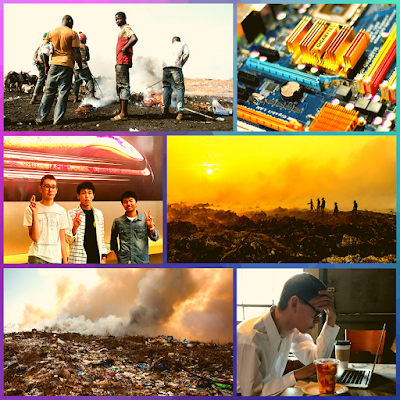The Global Impact of E-Waste
Americans throw away an astonishing amount of electronics. In the US, consumerism and product obsolescence results in shortened electronic life cycles. The US generates over 40 pounds per person per year of e-waste, or 7 million tons in total, where most ends up in the trash. This e-waste includes items such as computer monitors, printers, laptops, cables, cell phones, tablets, VCRs, and DVD players.
Our obsession with cutting-edge technology results in an incredible amount of e-waste. Americans throw away $55 billion in e-waste annually, which is more than the Gross Domestic Product of many countries. In fact, only 20% of e-waste is collected and recycled, despite the high-value recoverable materials such as gold. Waste is not only created in the disposal of electronics, but also in its production. For instance, producing a computer along with its monitor takes at least 1.5 tons of water, 48 pounds of chemicals, and 530 pounds of fossil fuels.
Many states have e-waste collection programs, but these programs often ship US e-waste abroad, where it is not properly regulated. Even worse, many US recycling centers ship their e-waste on cargo bunker ships for processing in developing countries, as it is more economical. Countries such as China, Nigeria, Pakistan, and Ghana receive tons of electronic waste from the US. every year. Often, US e-waste is dumped on other nations without recourse, under the guise of electronic donations to bridge the digital divide. This toxic e-waste contains materials such as lead, copper, and PVCs, which lead to birth defects; brain, heart, liver, kidney and skeletal system damage; as well as nervous and reproductive system damage.
US e-waste recycling programs also neglect the adverse environmental impact of shipping our e-waste overseas. The fuel used in bunker ships is waste oil. It is the same as asphalt and is so thick that when cold it can be walked upon. In international waters, ship emissions remain one of the least regulated parts of our global transportation system. The most staggering statistic of all is that just 16 of the world’s largest ships can produce as much lung-clogging sulfur pollution as all the world’s cars.
Our locally focused US e-waste recycling policies come at a global cost. It is time for us to think about keeping that laptop a little longer, sticking with that older cell phone, decreasing the number of electronics in our households, and finding ways to encourage state legislators to increase our right to repair broken electronics. We need to push for better electronic designs that are more environmentally friendly, such as standardized cables that stay consistent over models, easy-to-replace batteries, and more modular designs. We should also push for greater accountability when recycling our electronic goods by checking if the recycling center practices environmentally sustainable practices by checking their certifications. A small change by all of us can make a world of difference.




Comments
Post a Comment